Gynecomastia: Male Breast Reduction in NYC
What is Gynecomastia?
Gynecomastia is a condition in which the male breast tissue becomes enlarged or overdeveloped in boys or men due to a hormonal imbalance of testosterone and estrogen. The result is an increase of excess breast tissue in one or both of the breasts. This condition often affects young boys who are going through puberty and, in most cases, will correct itself over time.
However, there are other causes for gynecomastia and the condition can become permanent in older men, resulting in the necessity for male breast reduction surgery. While gynecomastia is not a serious health concern, boys and men who suffer from the condition may experience pain in the breasts. There may also be a self-esteem component as this condition can cause emotional discomfort due to embarrassment or lack of confidence in one’s physical appearance.
Gynecomastia will typically manifest in the form of an accumulation of glandular tissue located under the nipple. There may be a sensation of soreness on or around the affected area. The breast tissue may continue to grow larger and slightly misshapen
Table of Contents
Gynecomastia: Before & After
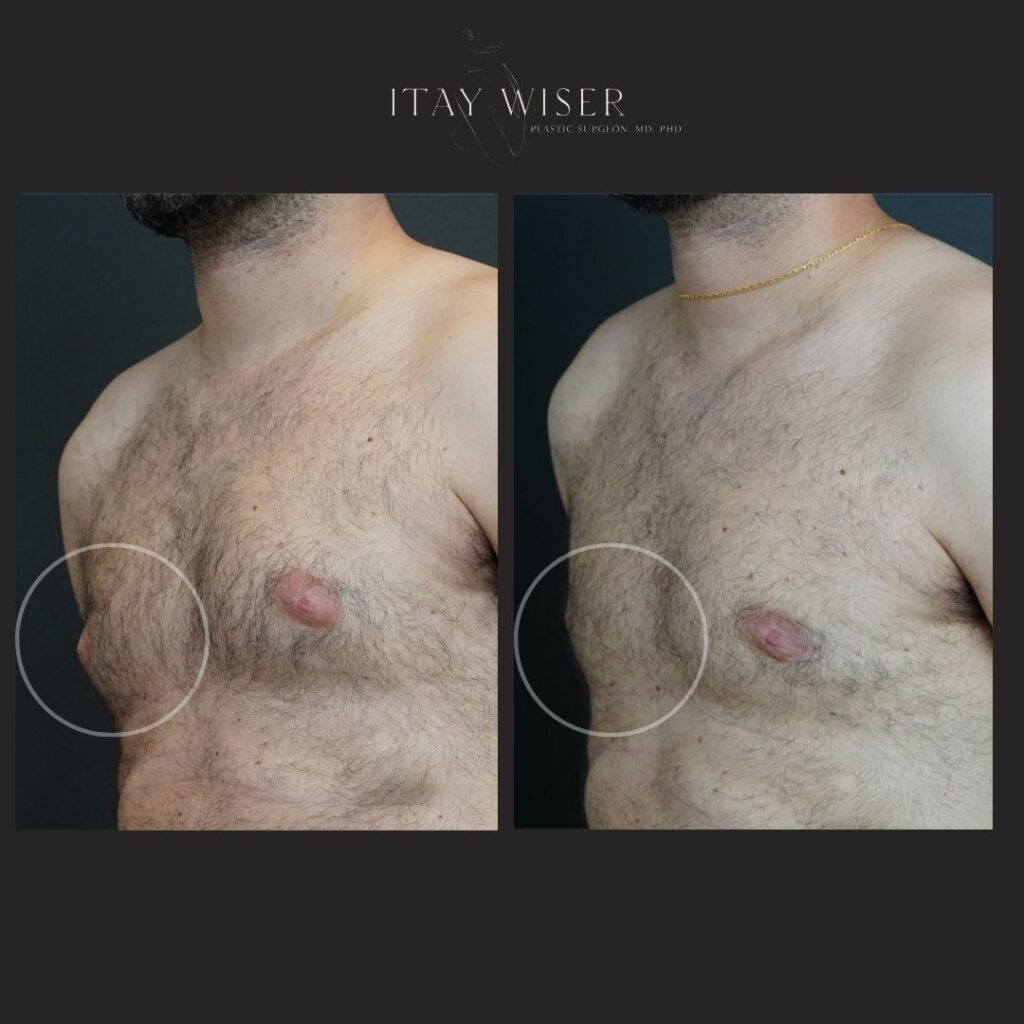
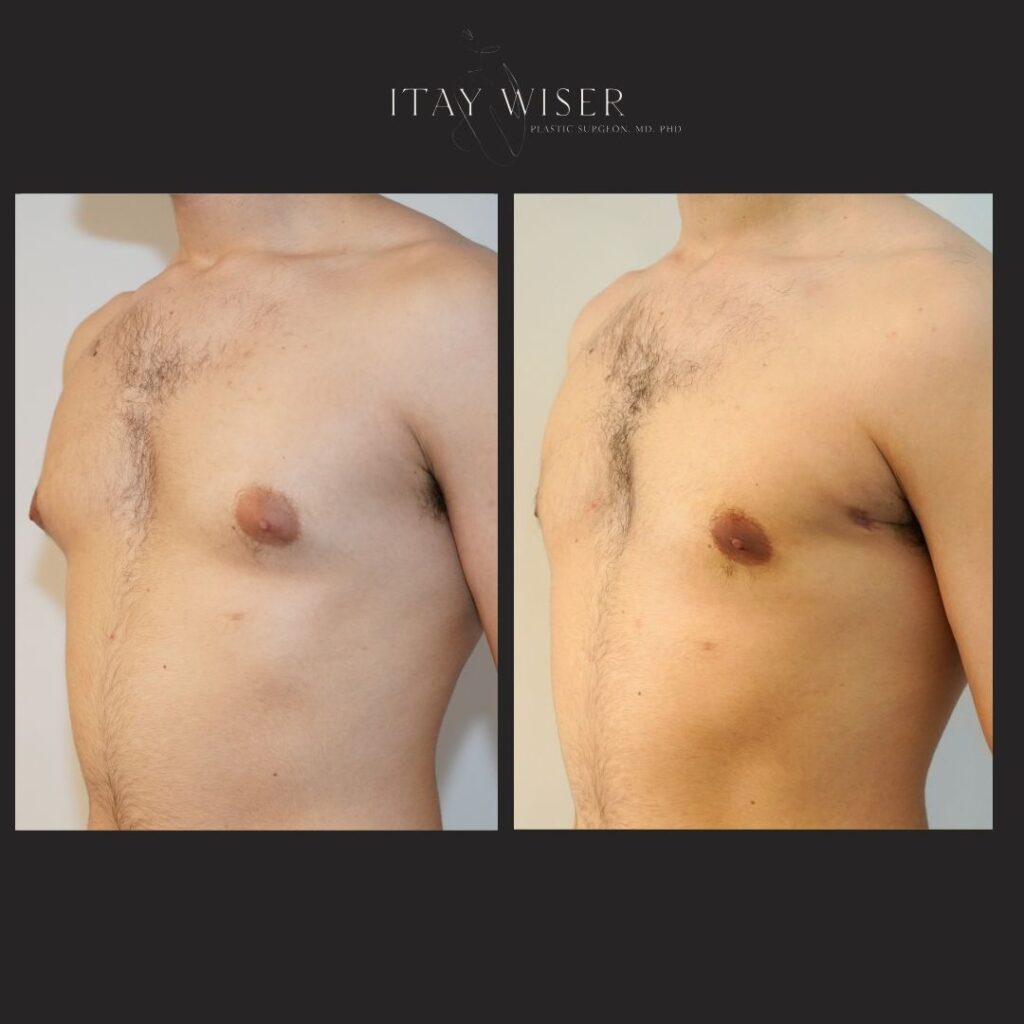
Why Patients Trust Dr. Wiser
Chief of Plastic Surgery at Mount Sinai Elmhurst
Thousands of successful
procedures
Advanced techniques for natural-looking results

About Dr. Wiser
Dr. Itay Wiser is a highly respected plastic surgeon in NYC, known for his expertise in breast surgery, mommy makeovers, tummy tucks, liposuction, and facelifts. As the Chief of Plastic and Reconstructive Surgery at Mount Sinai Elmhurst Hospital, he combines advanced medical knowledge with an artistic approach to deliver natural, long-lasting results.
With extensive training in aesthetic and reconstructive breast surgery at Lenox Hill Hospital and a fellowship in lymphedema surgery at Memorial Sloan Kettering Cancer Center, Dr. Wiser stays at the forefront of modern plastic surgery. His PhD in epidemiology and public health ensures that every treatment is backed by the latest research and techniques.
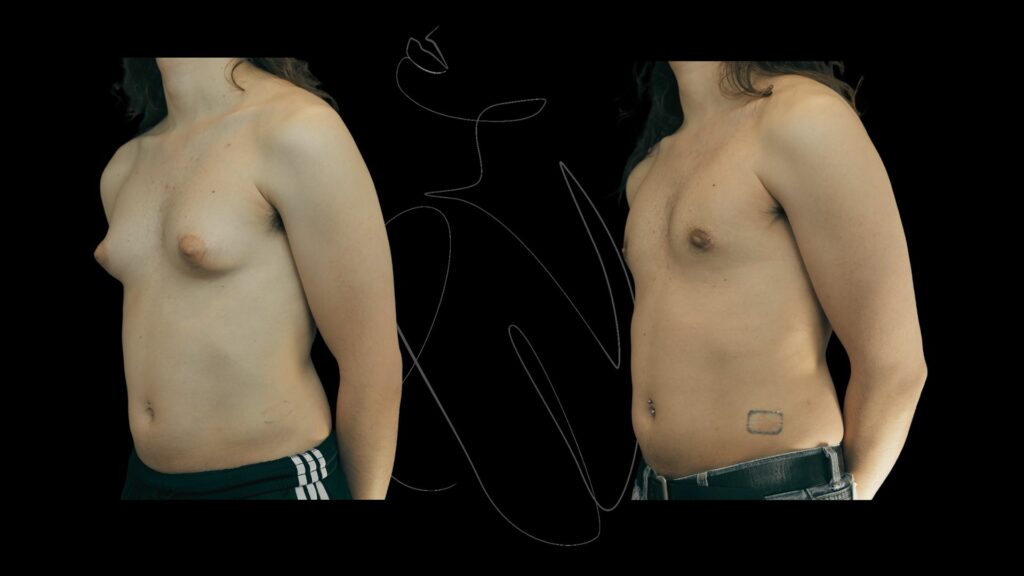
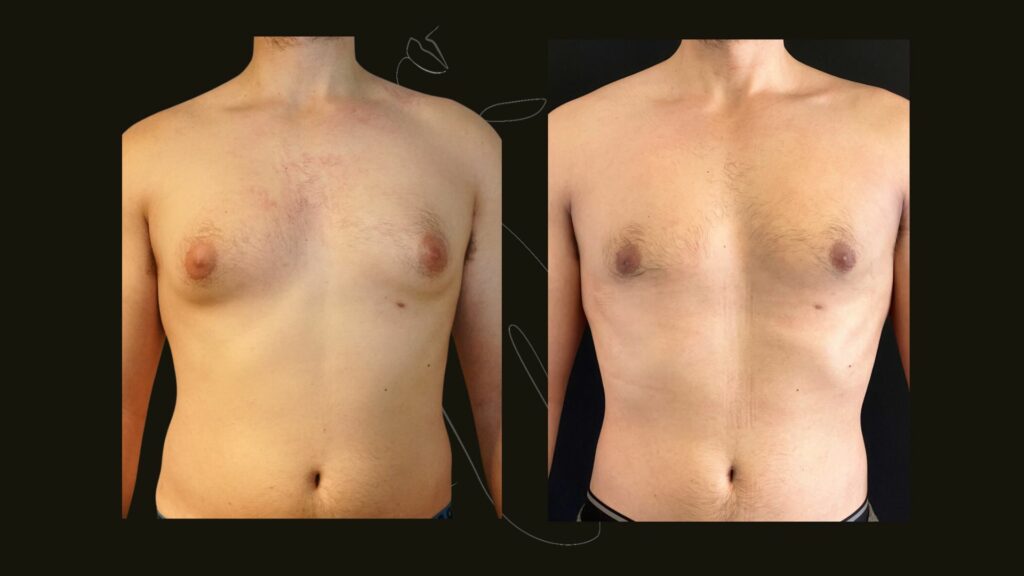
DOES INSURANCE COVER GYNECOMASTIA SURGERY?

Many men struggling with gynecomastia wonder whether health insurance will help cover the cost of surgery. The answer is: it depends on your specific situation, your medical history, and your insurance policy.
Health insurance companies generally distinguish between cosmetic procedures and medically necessary treatments. Gynecomastia surgery (male breast reduction) may sometimes be considered cosmetic, but in other cases it can be deemed medically necessary if it causes:
Persistent pain or tenderness
Physical discomfort during activity
Functional issues
Severe emotional or psychological distress
Because of this, coverage is not guaranteed and each case requires careful review.
Providers typically look for:
Comprehensive medical documentation – records of symptoms, duration, and prior treatments
Diagnostic tests – such as hormone level testing, imaging (ultrasound, MRI), or biopsy to confirm the diagnosis
Evidence of medical necessity – showing that the condition impacts your health or quality of life
Treatment history – attempts with medication, weight loss, or other non-surgical options
Specialist evaluation – confirmation from a board-certified physician or plastic surgeon
Since no two cases are the same, the only way to determine if your gynecomastia surgery could be covered is through a personal evaluation. Dr. Itay Wiser will review your medical history, perform a physical exam, and order the necessary tests to build a comprehensive case for medical necessity if appropriate.
What Can I Expect During My Consultation?
During your consultation for gynecomastia surgery, Dr. Itay Wiser will conduct a comprehensive evaluation to determine the best approach for your treatment. Here’s what you can expect:
Medical History Review – Dr. Itay Wiser will discuss any medications, medical conditions, or lifestyle factors that may contribute to your gynecomastia.
Physical Examination – Your chest will be examined to determine whether the enlargement is due to glandular tissue, fat, or both.
Diagnostic Tests – In some cases, imaging tests such as ultrasound or mammography may be required to rule out other conditions.
Discussion of Treatment Options – Dr. Itay Wiser will explain the available gynecomastia surgery techniques, including liposuction, glandular tissue excision, and skin tightening if necessary.
Personalized Surgical Plan – You will receive a customized surgical plan tailored to your needs, including details about anesthesia, recovery, and expected results.
This consultation is your opportunity to ask questions and discuss any concerns you may have about the procedure.
Am I a Candidate for Gynecomastia Surgery?
The cause and symptoms of gynecomastia can be varied and in some, but not all cases, plastic urgery is the best option to solve the problem. However, gynecomastia surgery as part of the male breast reduction process is not always the right fit for each individual. We must first ascertain if any male patient is a good candidate for gynecomastia surgery.
The following criteria are just some of the important factors that can demonstrate whether or not a male patient should undergo this type of surgical procedure:
You may be a good candidate if you:
- The gynecomastia is unable to be treated through treatment options other than surgery.
- The patient is in good physical health with no current life-threatening illness or health condition.
- The patient is a non-smoker and does not use recreational drugs.
- The shape and growth of the breast has stabilized and fully developed.
- The patient has experienced emotional discomfort due to concerns over his appearance and feels gynecomastia surgery is a realistic and necessary option.
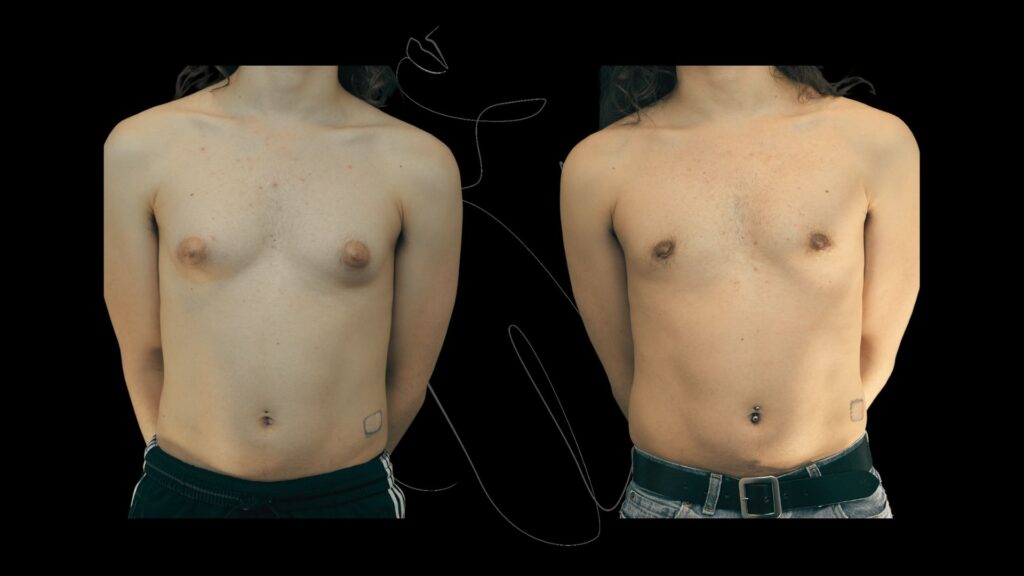
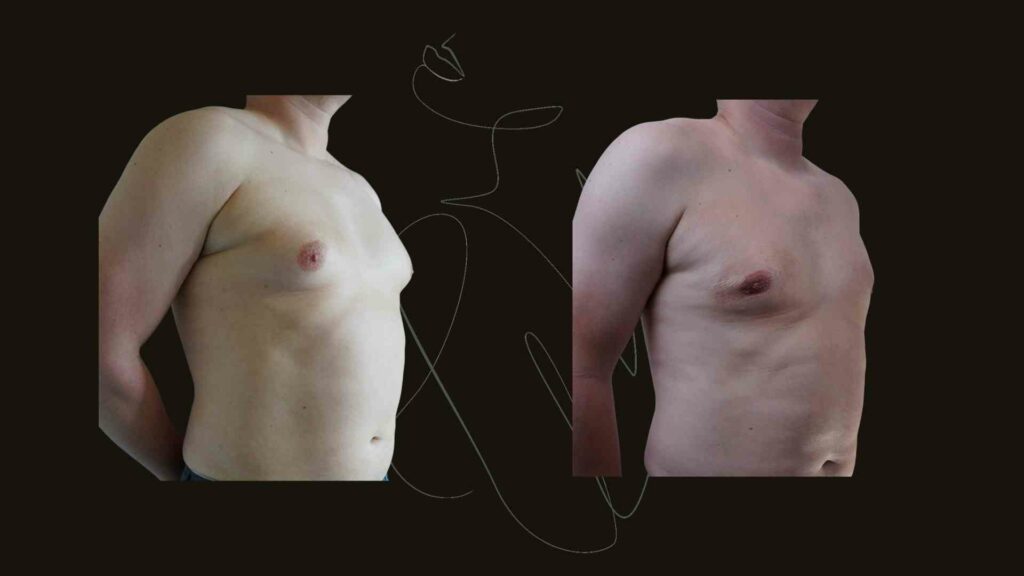
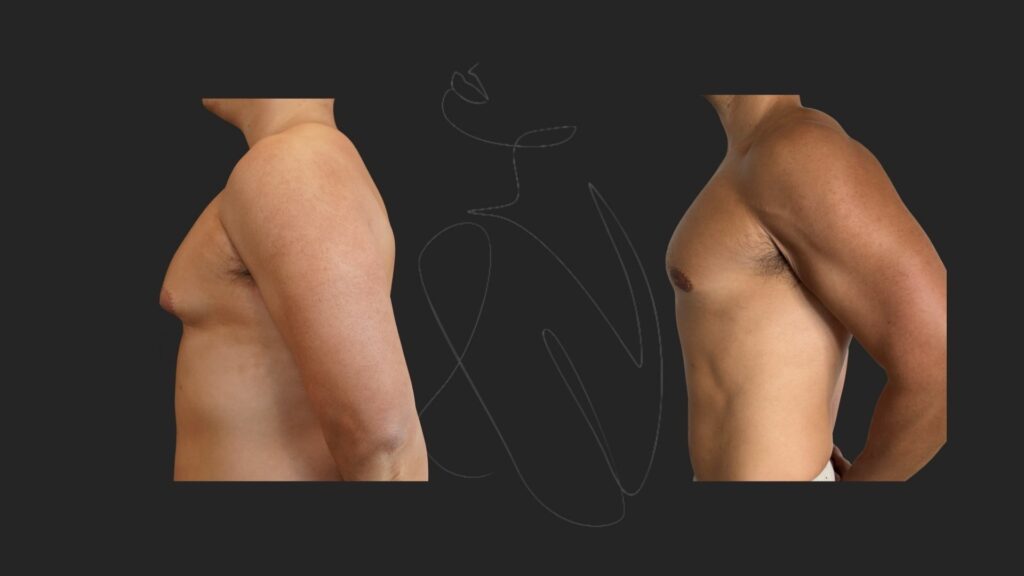

Causes of Gynecomastia
There are several reasons why men develop gynecomastia, including:
Hormonal Imbalance – An imbalance of estrogen and testosterone can cause breast tissue growth. Elevated estrogen levels or reduced testosterone can lead to glandular development in men.
Steroid Use – Gynecomastia from steroids is common among bodybuilders using anabolic steroids and testosterone replacement therapy (TRT), as these can disrupt hormone levels.
Weight Gain and Obesity – Excess fat in the chest area can contribute to pseudo gynecomastia, a condition where fat accumulation mimics gynecomastia but does not involve glandular tissue.
Medications and Drugs – Certain drugs, including antidepressants, anti-androgens, and heart medications, may trigger gynecomastia.
Medical Conditions – Liver disease, kidney disease, and tumors affecting hormone levels can lead to male breast enlargement.
Puberty and Aging – Gynecomastia in puberty often resolves on its own, while older men may develop it due to low testosterone levels or hormonal changes with age.
How is the Gynecomastia Surgery Performed?
Gynecomastia removal surgery is typically performed using one or both of the following techniques:
Liposuction – Used to remove excess fat from the chest, particularly in cases of pseudo gynecomastia.
Glandular Tissue Excision – Required for severe cases where glandular tissue must be surgically removed.
Skin Tightening (if needed) – In cases of extreme gynecomastia with loose skin, skin removal may be necessary.
The procedure is typically performed under local anesthesia with sedation or general anesthesia, depending on the severity of the condition.
In cases whe the excess breast tissue is the root cause of gynecomastia, liposuction is usually the best form of treatment. This is performed using a cannula, which is a long, thin tube that is inserted in through many tiny incisions.
That cannula the releases the excess fat before using vacuum suction to remove it. There are many liposuction techniques from which to choose, the most effective method to target the concerns of the patient is decided upon before the procedure is started.
For cases where fatty tissue or excess skin removal is the reason for gynecomastia, excision techniques will be necessary to correct the problem. Male patients who want a sculpted chest that looks natural may require excision to reduce or reposition the areola or nipple to achieve the desired results.
It is not uncommon for liposuction and excision techniques to be used together for the desired bodily aesthetic.
What incisions are there with gynecomastia surgery?
Performing male breast reduction surgery is done using a local anesthetic to numb the areas where incisions will be made or if preferred, general anesthesia is administered for sedation. The fat and glandular tissues are removed during the surgical procedure along with any excess skin, if necessary.
Once the procedure is complete, the patient will need to wear a compression garment to keep swelling to a minimum and promote healing. This is outpatient surgery, patients can go home on the same day.
All gynecomastia surgery for male breast reduction requires the use of incisions. The locations of these incisions are chosen carefully to conceal the scars that are left behind. We make every effort to make incisions at or near the natural contours of the breast or pigmented areas of the areola to reduce visibility. Incisions may also be placed under the armpit. In situations where there is excessive breast skin, more incisions may be needed to achieve a male-appearing breast.
HOW TO PREPARE FOR GYNECOMASTIA SURGERY?
Always keep in mind that good candidates for gynecomastia surgery are patients who are in good physical health. That may require making some lifestyle changes now, before the surgical procedure, so the recovery process and results of the surgery are highly successful.
At WiserMD we do not leave anything to chance. Dr. Wiser performs an elaborate lab work to assess your body’s condition. If any abnormalities are found, Dr. Wiser will treat them first, and make sure they are normalized prior to surgery.
The healing process that follows gynecomastia surgery requires available nutritional elements in increased amounts to be utilized by the immune system. At WiserMD you will be given a special nutritional supplement to replenish your body and optimize it for healing.
Although the chances of infection following male breast reduction surgery are slim, we at WiserMD are reducing them closer to zero. Dr. Wiser prescribes all his patients with an evidence-based special anti-septic soap to shower with a week prior to surgery. This action minimizes the skin bacteria population, which are the most common cause of post surgical infection.
Perhaps the most important of these changes is diet. Less sugar consumption and eating more fruits and vegetables are hardly a secret plan for living a healthy life. We’ve been hearing these recommendations since we were kids. When it comes to preparing for gynecomastia surgery, they become even more imperative for optimal health and self confidence.
Regular exercise is also a major contributing factor to that success. Cutting down on alcohol and eliminating tobacco are two of the best things to do prior to surgery. Lastly, any hormonal supplements and steroidal products must be avoided in the lead up to the procedure.
A healthy patient is a successful patient and making these lifestyle changes now will go a long way towards a speedy recovery and successful outcomes for male breast reduction surgery.
Gynecomastia Recovery Timeline & Aftercare
First 24-48 Hours
First Week
Two to Four Weeks
Six Weeks and Beyond
Benefits of Male Breast Reduction Surgery
Permanent solution
Boosts confidence
More masculine physique
Minimal scarring
Improved posture
Enhanced physical performance
How Much Does Gynecomastia Surgery Cost?
Determining gynecomastia surgery cost in New York is not unlike trying to determine the recovery time of the procedure before any consultations or diagnoses are made. Since every patient’s needs and treatment options are different, it’s very difficult to know what the costs will be until a treatment plan is decided upon.
Once an initial consultation is performed and there is a clearer picture of the severity of the condition and the procedures necessary for reducing or eliminating the problem, only then will there be an accurate estimate as to the cost for treatment.
But many insurance plans do cover the costs of gynecomastia surgery in full or in part as per the insurance provider and the limits of coverage outlined in the patient’s policy. Dr Wiser’s team is very experienced in finding your insurance coverage, and making recommendations about your next steps.
Gynecomastia (Male breast Reduction) FAQs
Can I Get Rid of Gynecomastia Without Surgery?
In mild cases, exercise and weight loss may help reduce chest fat. However, surgical removal is the only permanent solution for true gynecomastia.
How Long Does Gynecomastia Surgery Take?
The procedure typically takes 1-2 hours under general or local anesthesia.
Will Gynecomastia Return After Surgery?
As long as you maintain a stable weight and avoid medications that trigger gynecomastia, the results are permanent.
Does Gynecomastia Surgery Leave Scars?
Scars are minimal and discreet, often hidden around the nipple
What Should I Expect After Gynecomastia Surgery?
You will need to wear a compression garment for several weeks to help reduce swelling and support the new chest contour. Most patients can return to normal activities within one week.
Can Gynecomastia Affect Only One Side?
Yes, unilateral gynecomastia is when one breast is larger than the other due to excessive glandular tissue growth.
How Soon Can I See Results After Gynecomastia Surgery?
Most patients notice a difference immediately after surgery, but final results take 3-6 months as swelling subsides.
Is Gynecomastia Surgery Safe?
Gynecomastia surgery is considered safe and effective with minimal risks.

